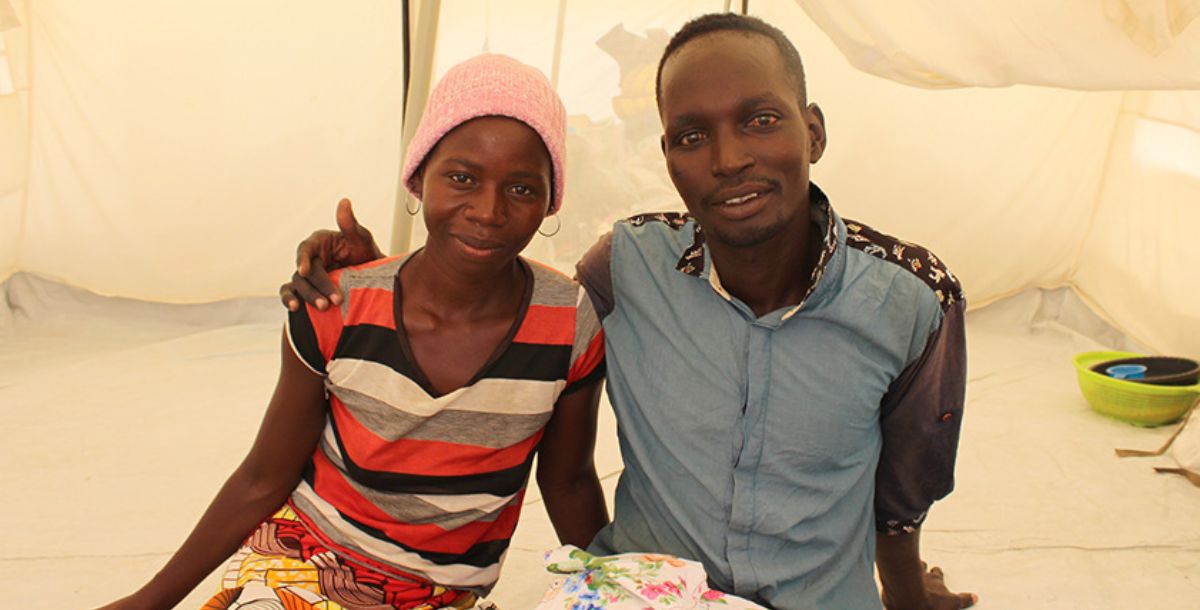News stories about refugees can grab the headlines. However, they do not tell the complete story. Because behind every headline is a story of human tragedy and bravery. And every refugee is a person in search of somewhere they can call home.
In this page, to mark World Refugee Day, we’re sharing some facts about refugees and dispelling some of the myths.
1. Most people forced from their homes do not become refugees
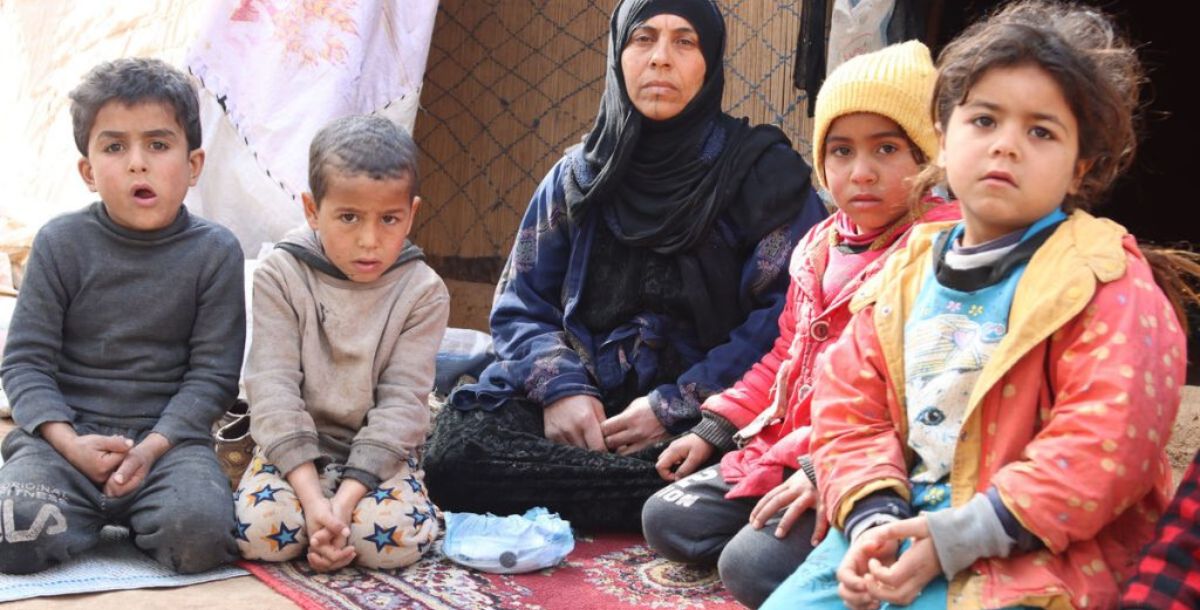
“Children, women, old people and men all run to escape the bombing. We were surprised when the bombing was coming over our heads; us and the other displaced people were running away with our children and nothing else.” Watfa and her family are some of millions of people internally displaced by the war in Syria.
Millions of people around the world have been forced from their homes. This can be due to conflict, or through events such as floods or earthquakes. However, of these people, most do not become refugees.
A refugee is someone who has fled to a different country to escape war or persecution. Most people who are displaced, even though conflict, stay in their own country. This is the country they have known and have ties too. Many also hope to return home one day when the threat of violence has passed. As such, they do not want to move far away. Families in this situation can end up in camps for Internally Displaced People (IDPs). ShelterBox has worked a great deal in such camps, supporting people who arrive with nothing. This includes Baidoa Camp in Somalia, housing people fleeing drought and violence. We have also supported people in camps in northern Syria, displaced by the conflict there.
2. Most refugees flee to neighboring countries
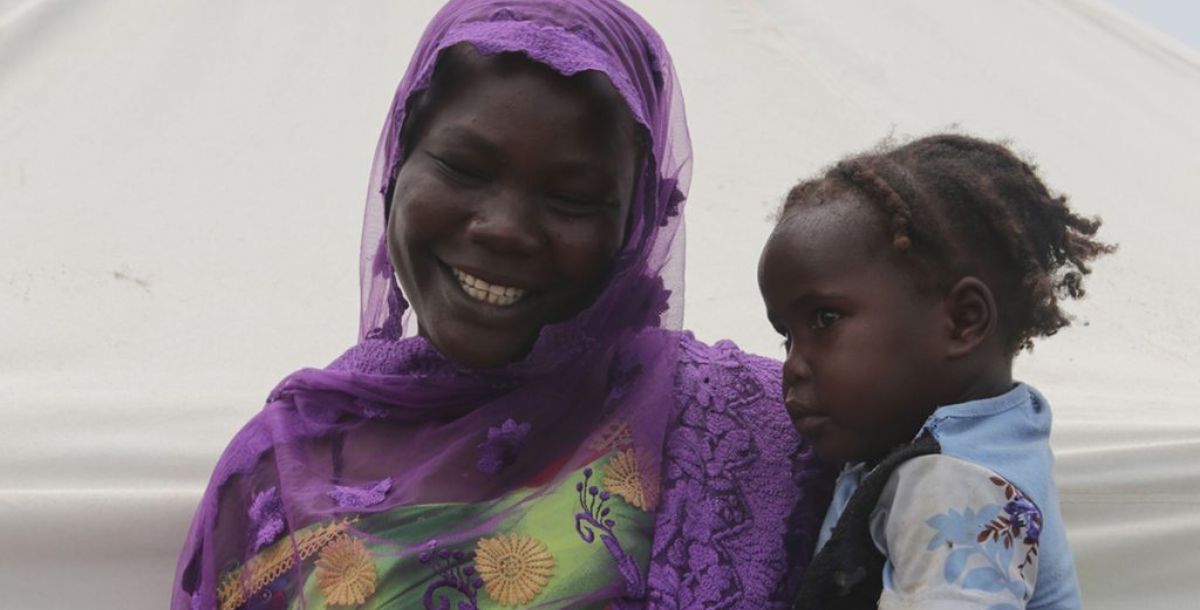
Asiza and her family fled to Chad to escape the violence in Sudan
The UNHCR estimates that 70% of refugees stay in countries neighbouring their country of origin. This is not surprising as many people want to stay closer to home if they can. Plus the journeys that refugees are forced to make to find safety can be long and very dangerous.
We have seen this with some of the people we support. For example, many people in Minawao Camp in Cameroon fled from neighboring Nigeria to escape Boko Haram violence. Likewise, we are supporting people in Chad who have escaped the conflict in Sudan.
3. Low or middle-income countries host the majority of refugees
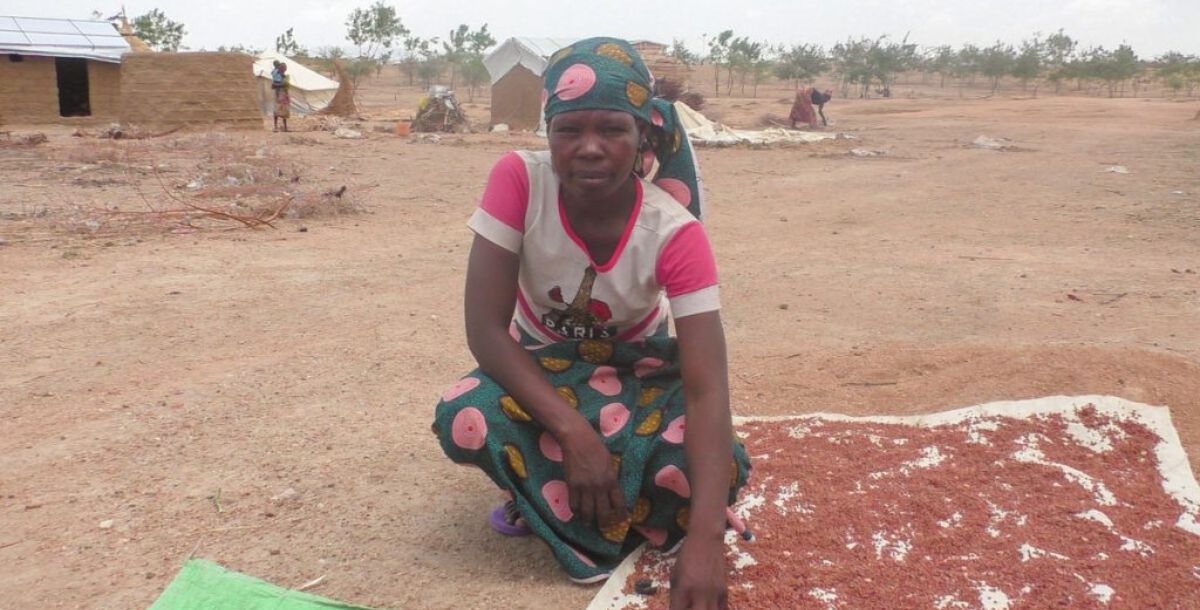
“The day I decided to leave was when I realized that I could lose another child. Attacks were common, and more and more children were either killed or kidnapped, and these were mostly boys.” After Falta’s village in Nigeria was attacked by Boko Haram, and her husband abducted, she fled with her children to neighboring Cameroon
Around 76% of refugees are hosted in countries with low or middle income. The poorest countries in the world have 9% of the world’s population, but they host 16% of refugees.
Despite this we have seen during our work the generosity of host families who share what little they have with refugees.
4. Around 40% of refugees are children
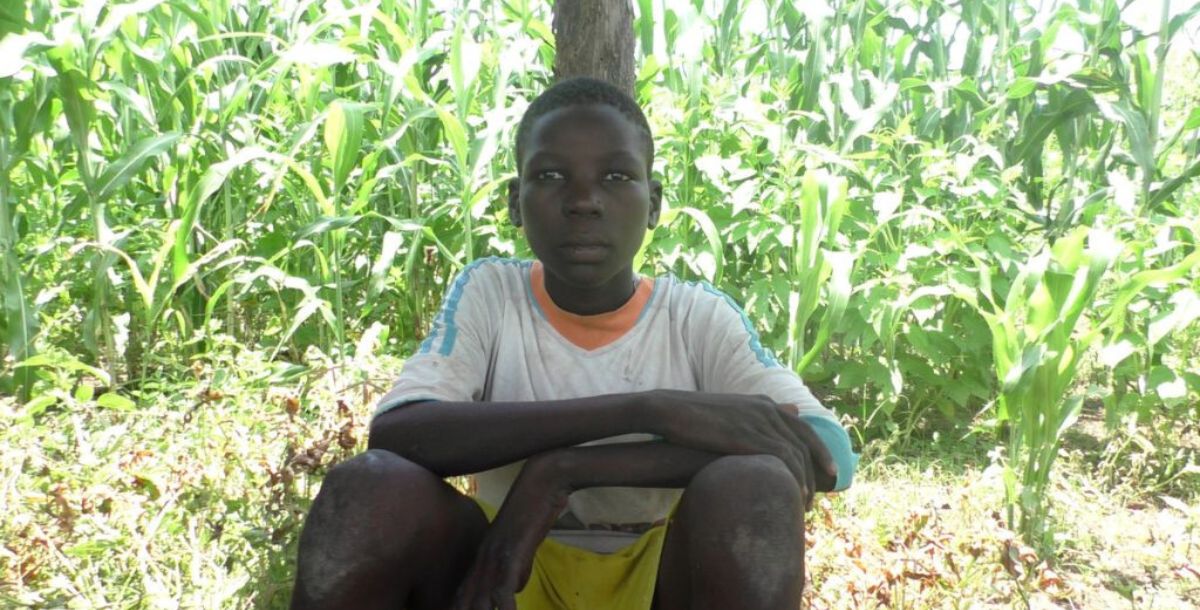
“It is impossible to imagine or even understand the life of the displaced unless you experience it first. The helplessness one feels when he loses everything (landmarks, material possessions) and on top of that, the uncertainty of a better tomorrow.” After losing both his parents to Boko Haram, 13-year-old Guidadi assumed responsibility for his younger siblings.
Children make up around 30% of the world population. This means that children are disproportionately affected by displacement. Many children flee with their families, but some lose their families and become unaccompanied refugees, or internally displaced people. We saw an example of this with 13-year-old Guidadi who lost his parents in a Boko Haram attack. He led his younger siblings to safety in Minawao Camp in Cameroon.
In 2018-2022 approximately 1.9 million children were born as refugees.
5. Türkiye and Iran host the highest numbers of refugees
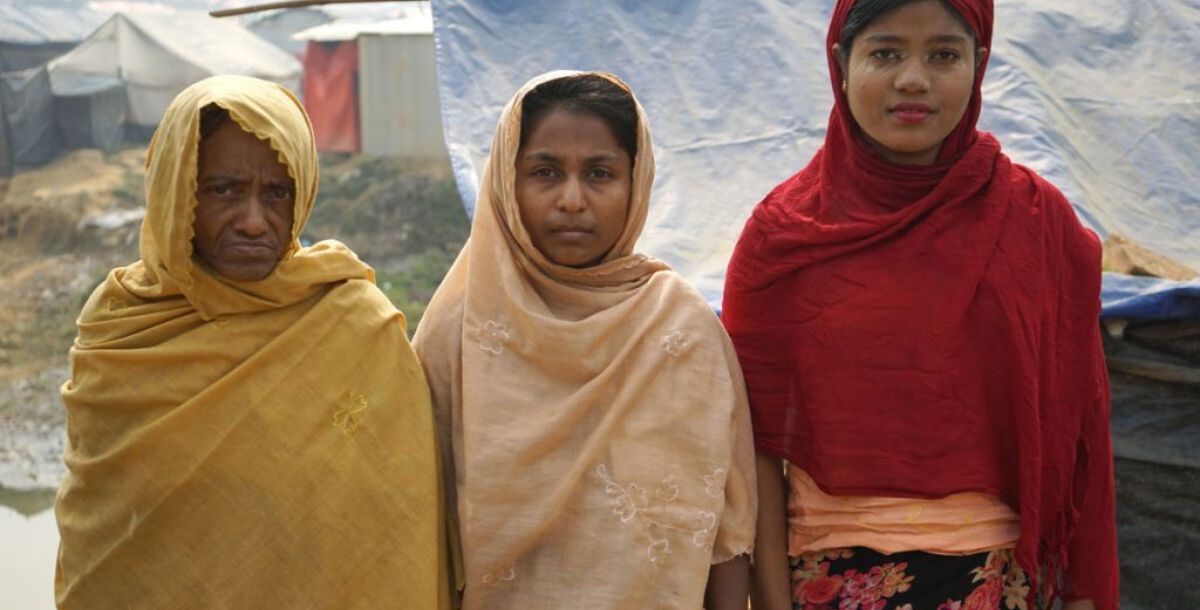
“The military fired at us and attacked us, they burnt all of the houses. There was nothing left and nowhere to take shelter so we fled. They burnt the whole village down, eight people died in the burning.” Karima, right, now looks after mother and aunt after they fled Myanmar to Bangladesh to escape violence. The refugee camp they are in is one of the largest in the world.
Both Türkiye (formerly Turkey) and Iran are hosting approximately 3.4 million refugees. These are mostly people who have fled the ongoing conflict in Syria. We have been working to support people in Syria since 2012, but in displacement camps within the country.
The EU and UK country with the highest number of refugees is Germany. They also receive the highest number of asylum applications, followed by France. The UK is 4th in this list (also behind Spain).
6. Some refugees are displaced for many years
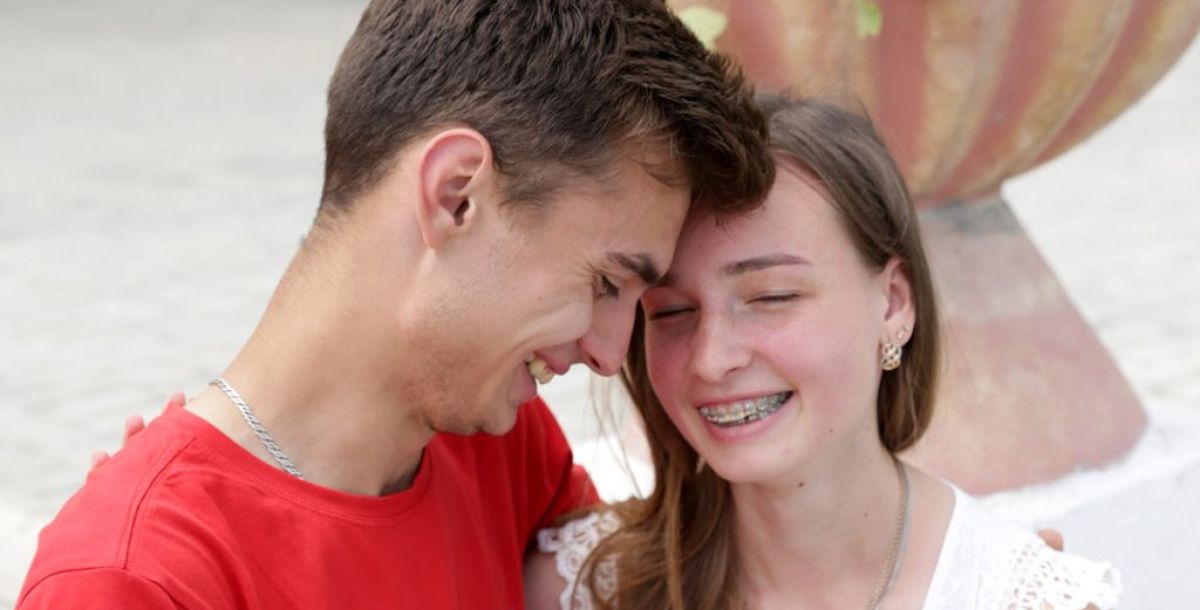
“That was an occasion when the missile fell and after that the windows shook. We live a little out of the city in a suburb and we had such a scare. We just packed everything we could and left. It was very scary. The sirens…very scary.” Vladyslav and Vlada had planned a future together in Ukraine. But due to the conflict their lives are on hold after fleeing to Moldova.
Some refugees are unable to return home for many years. They become caught in ‘protracted displacement’ – when people are in a host country for over 5 years. We have seen this in some of the places we have worked, notably Cameroon. Some of the residents have been at Minawao Camp for many years.
Unfortunately, the number of people able to return home has been dropping, as crises continue with no end in sight. In 2022, for every person who was able to return home or resettled, there were 16 new refugees.
7. The climate crisis is becoming a cause for displacement
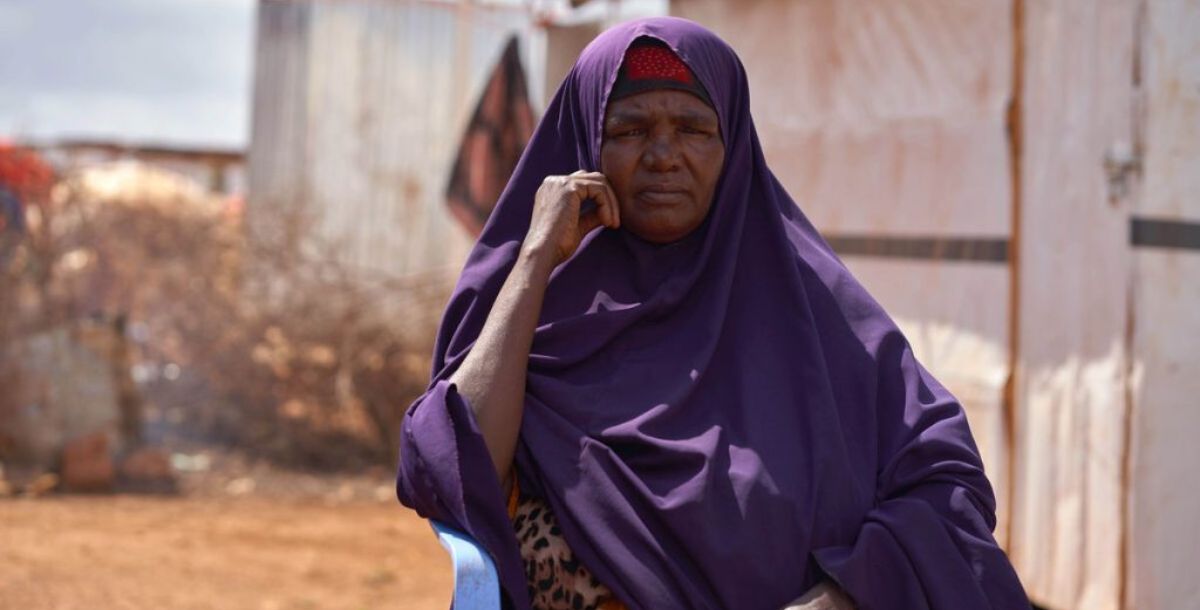
“Life was simpler in the past when we had animals and farms. However, due to the drought, we no longer had enough water and grass for the animals. The animals died of hunger and the farms dried up because of lack of water and rain. It was really sad to watch the animals die because of this and being forced to move to this camp for a better life.” Deeqo is one of the many people displaced by the drought in Somalia.
Increasingly, we are seeing more and more people displaced by the climate crisis.
People have been forced to leave their homes in the past due to weather events such as flooding, storms or drought. However, as such events become more severe due to climate change, more people are seeing their homes destroyed this way. They can then be forced to move elsewhere, particularly if there’s no prospect for rebuilding.
In some countries, the changing climate is destroying livelihoods. People who live on the land are increasingly seeing their farms and food sources destroyed by droughts, floods or storms. These people, known as climate refugees, then have to move to towns and cities to seek aid and new livings. We have seen this in Somalia, Bangladesh, the Philippines and more. And in a recent news story, an entire island in Panama was evacuated due to rising water levels. As the climate crisis continues unabated, there is likely to be an increase in the number people forced to flee their homes. Watch our video below to learn more.
Our vision is for a future where no one is without shelter after disaster or conflict – whether they can stay in their country or have to flee elsewhere. Please donate now to support our work.
Sources: UNHCR, International Rescue Committee

